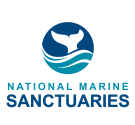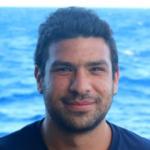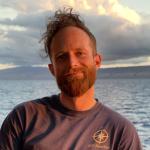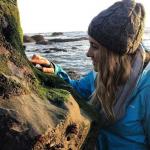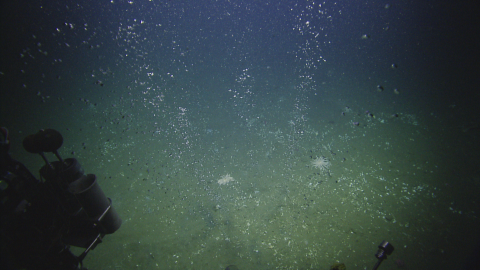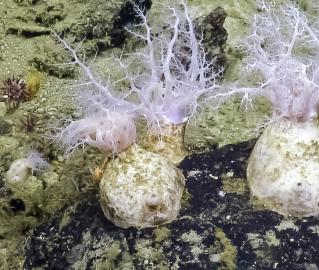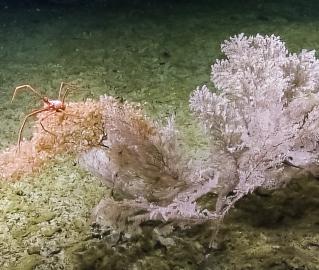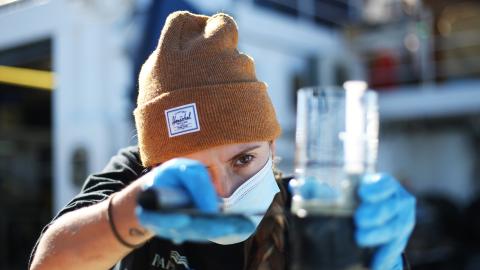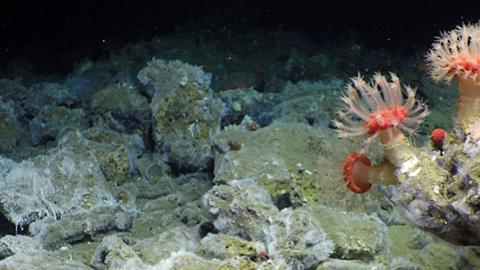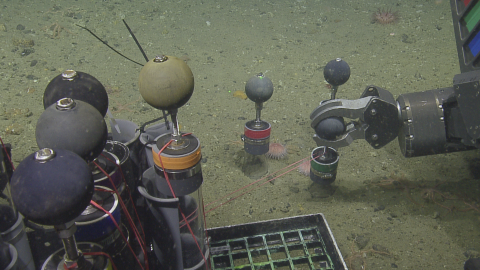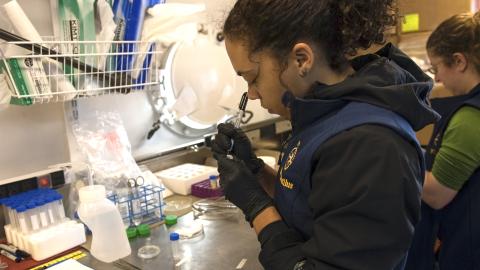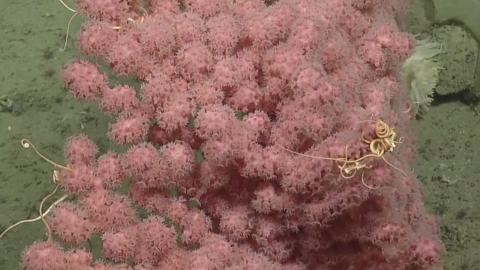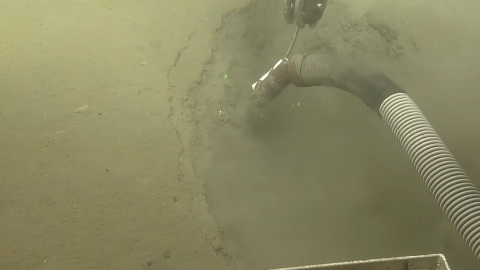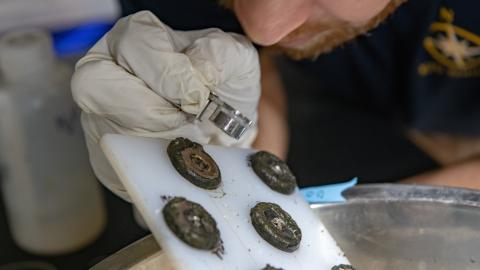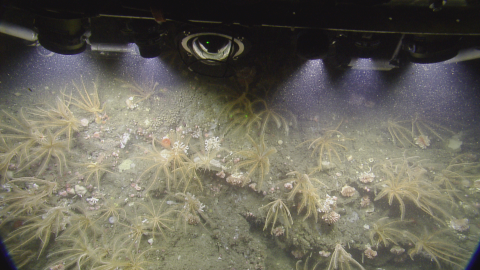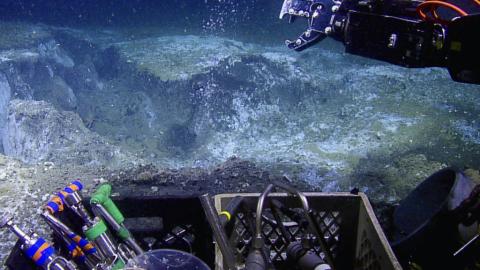The Olympic Coast National Marine Sanctuary is a biologically diverse and ecologically rich region that encompases nearly 8,250-square-kilometers (3,200 square miles) of coastal and ocean habitats along the wild, remote and scenic Olympic Coast of Washington State. Twelve days of exploration within and adjacent to this area will allow scientists to investigate and sample biological communities in and around deep canyon features, including deep-sea coral, sponge and fish communities, as well as unique organisms associated with more than 2000 methane seep and hydrate locations identified in this region over the past decade.
Research activities will also focus on deep-sea canyon communities around Quinault Canyon, which lies partially within sanctuary boundaries and within the protected harvest areas for the Quinault Indian Nation, a sovereign tribal government with reserved rights to marine areas. ROV work will explore steep, hard-bottom habitats within Quinault Canyon, including within areas mapped by Nautilus in previous expeditions. The team will also return to the site of a large meteorite fall that occurred near the rim of Quinault Canyon, prompting OET to work opportunistically in 2018 with NASA and OCNMS to attempt to recover fragments of the meteorite from the seafloor.
Efforts focusing on deep-sea methane seeps help us to better understand the role of these unique marine environments both in ocean ecosystems providing nutrients for diverse life on the seafloor, and in human ecosystems in future “blue economies.” Exploration in Quinault Canyon and its associated features will be conducted through high-definition video imagery and the collection of water, sediment and biological samples.



